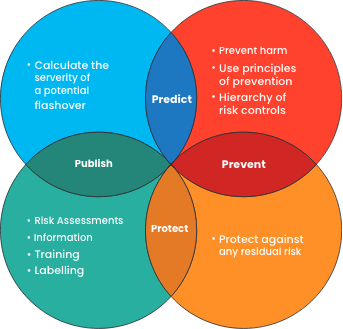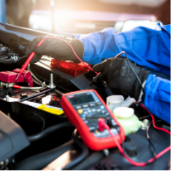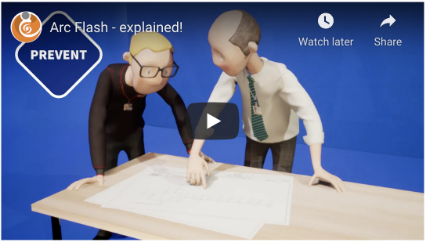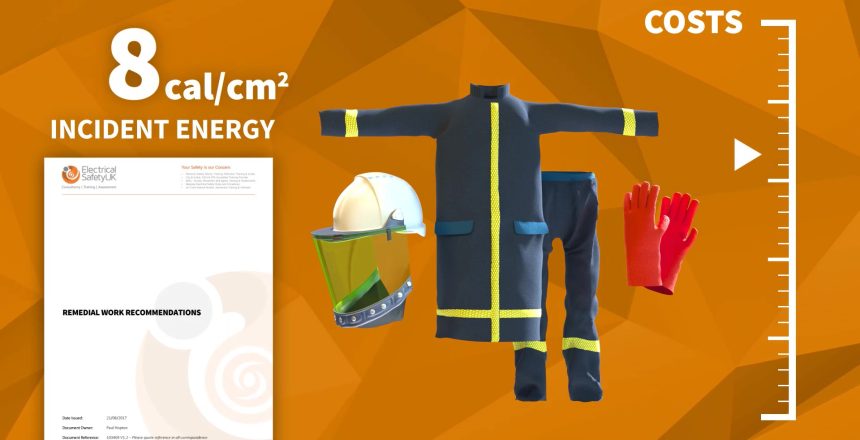What causes Arc flash?
Arc flash may be caused by unintentional contact between an energised conductor, such as a bus bar or wire, with another conductor or an earthed surface. Equipment failure can also cause an incident.
Many believe the risk of arc flash occurs when working at high voltage but there is evidence to suggest low voltage may be even riskier. Studies show hazard severity is, on average, higher at low voltage than high voltage.
The potential to cause harm will vary with the current that can flow in an arc, the amount of time the arcing fault is
sustained, the length of the gaps between the conductive parts, which are bridged by the arc, electrodes, the confinement around the arc, the chemical compositions of the conductors and the materials around the arc, and the distance of the worker from the arc.

Common causes of arc flash include:
• Equipment failure
• Dropping un-insulated tools or metal parts
• Using incorrectly specified instruments
• Live work on damaged equipment such as cables
• Loose connections and exposed live parts
• Lack of awareness and training
How to prevent Arc flash
Other than isolating the power supply, completely eliminating the arc flash hazard is very difficult, but there are measures you can take to reduce the possibility and severity of hazards.
Management of Health and Safety at Work Regulations 1999 specifies an obligation on behalf of the Employer to assess the level of risk involved in the workplace and the effectiveness of the precautions to be taken. For electrical work, this should include arc flash hazards.
The likelihood of an electric arc (or worse) occurring is low but the potential severity is high. Control measures can be adopted to reduce both the hazard and likelihood of taking place, therefore reducing the risk.
For example, you can:
- De-energize electrical equipment
- Wear suitable Personal Protective Equipment (PPE)
- Keep at a safe distance
- Reduce the energy output from an incident
- Carry out a risk assessment
- Train on-site workers to control risks and interrupt faults
An effective way to help prevent arc faults is to use our 4P Model for arc flash hazard management: Predict, Prevent, Protect, Publish. Identify and calculate the potential risks. Use principles of prevention to control risks. Reduce the risk of injury with proper protection. Collect information for future workers to reassess changes such as environmental conditions and equipment state.

For businesses, a great place to get started is by booking a free arc flash pre-assessment.
One of the best ways to combat the risk of arc flash is to get in an electrical safety professional. We’ve conducted arc flash safety management for a wide range of clients including National Grid, Northern Powergrid and Honda Racing so you’re in
safe hands.
If you have on-site workers and you’re looking to manage hazards yourself, there is also the option to undergo training.
Who needs Arc Flash training?
Human error can play a large part in injury or death due to arc flash, so effective training is essential to reduce the risk. Electrical personnel are susceptible to incidents at both high and low voltage. This typically includes personnel carrying out maintenance and testing activities on electrical equipment such as Electricians and Electrical Engineers.
Some professions where arc flash training is important to include:

Electrical engineers

Civils – Excavations

Working near electrical equipment

Electricians

Electrical supervisors
Qualified persons should know how to limit fault currents with appropriate devices, reduce arcing time, and calculate safe arc flash boundaries. If you are familiar with applicable legislation, recognising when you could be exposed, and knowing the level of hazard present, you have a great foundation to keep safe. We highly recommend learning how to carry out task-based arc flash risk assessments with this City & Guilds Assured Programme.
Get a strong entry-level understanding of arc flash with a half-day awareness course.




